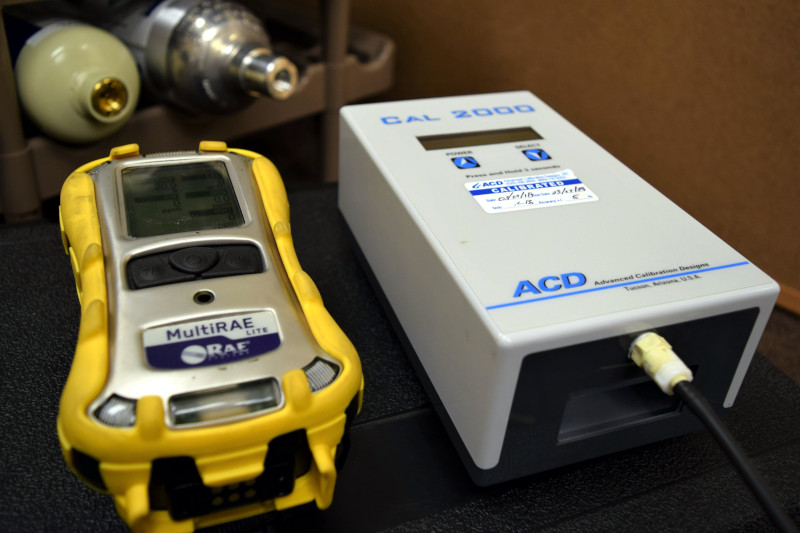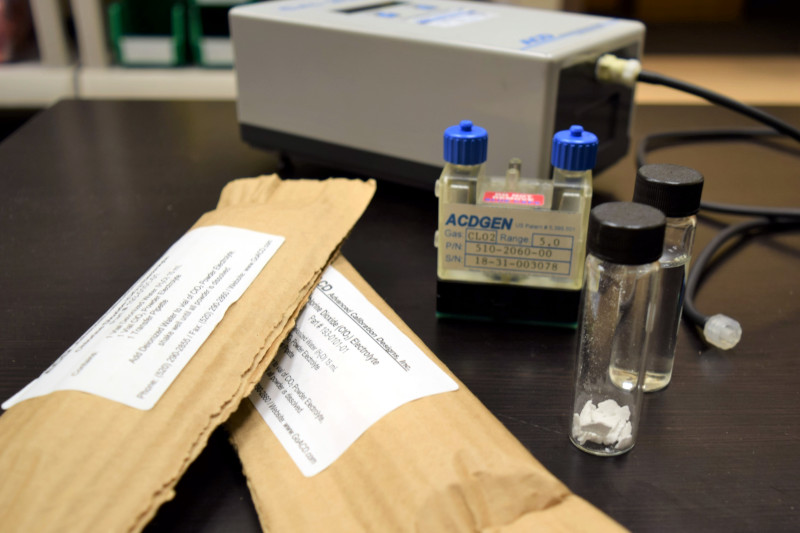 The ACD Cal 2000 alongside a RAE Systems MultiRAE Lite.
The ACD Cal 2000 alongside a RAE Systems MultiRAE Lite.
Bump tests and calibrations are important
aspects of any gas detection program. While calibration gases are excellent for bumping
and calibrating gas detectors, conventional cal gas cylinders also present a
few challenges, most notably shelf life, transportation restrictions, and
shipping costs.
Calibration gas generators are an alternative to traditional calibration gas cylinders. These generators use calibration sources, also sometimes referred to as cells, to create cal gas on demand.
Although the initial investment for a generator is greater than for calibration cylinders, cal gas generators may provide significant advantages in the long run.
1. Most cal sources do not degrade
Cal gases must be replaced routinely due to their shelf life. Non-reactive gases, like Carbon Monoxide and Isobutylene, are relatively stable and can last over 3 years in a cylinder, while reactive gases like Chlorine (Cl2), Ammonia (NH3), and Hydrogen Cyanide (HCN) have shorter shelf lives, typically between 9 - 12 months.
Most calibration sources, on the other hand, do not have a shelf life. Cal gas generators create gases on demand, which means gas degradation is not a factor, and the gas will be delivered to the instrument at the intended concentration.
2. Cal sources may be used for unstable gases
Some gases, like Chlorine Dioxide (ClO2), are too unstable to practically keep in a cylinder at all. For these gases, calibration generators are the only practical option.
Although gas cylinders are often used for Chlorine, gas generators may still prove to be a practical choice to avoid frequent replacement of the calibration gas cylinders. Chlorine has a shorter shelf life than most other gases and requires special precautions to preserve the Cl2 in the cylinder.
 A cal gas generator is the best method for calibrating a gas detector to Chlorine Dioxide (ClO2).
A cal gas generator is the best method for calibrating a gas detector to Chlorine Dioxide (ClO2).
3. Cal sources are not restricted for shipment and transport
Since they are classified as a Class 2.2 Hazardous Material, cal gas cylinders require special training to ship according to D.O.T. regulations. As a result, they are costly to ship.
Over time, the shipping costs associated with purchasing new cylinders add up. Cal sources are non-hazardous for transport and can be shipped without extra labeling or fees.
4. Some cal gas generators may be set to variable concentrations
There are few standards for calibration concentrations across different brands of gas detector. RKI instruments, for instance, are calibrated to 25 ppm Hydrogen Sulfide (H2S), while the current line of RAE Systems instruments call for 10 ppm H2S.
Gas generators provide an easy solution for users who require multiple concentrations of calibration gas. Some gas generators, like the ACD Cal 2000, allow for gas concentrations to be adjusted on the fly, simplifying the calibration process and reducing the demand for additional calibration cylinders.
5. Cal gas generators can help you save money
Calibration gas generators will likely not be the best option for completely replacing calibration cylinders. The fact that they can only calibrate one sensor at a time makes them prohibitive for calibrating standard 4-gas meters or other configurations where multiple gases can be calibrated at once.
For reactive gases, however, calibration generators can provide significant savings over time in both calibration cost and shipping costs. For some users, a compromised approach of using gas cylinders for non-reactive multi-gas mixtures and a calibration generator for reactive gases may be the most cost efficient option.
This entry was posted in no categories.